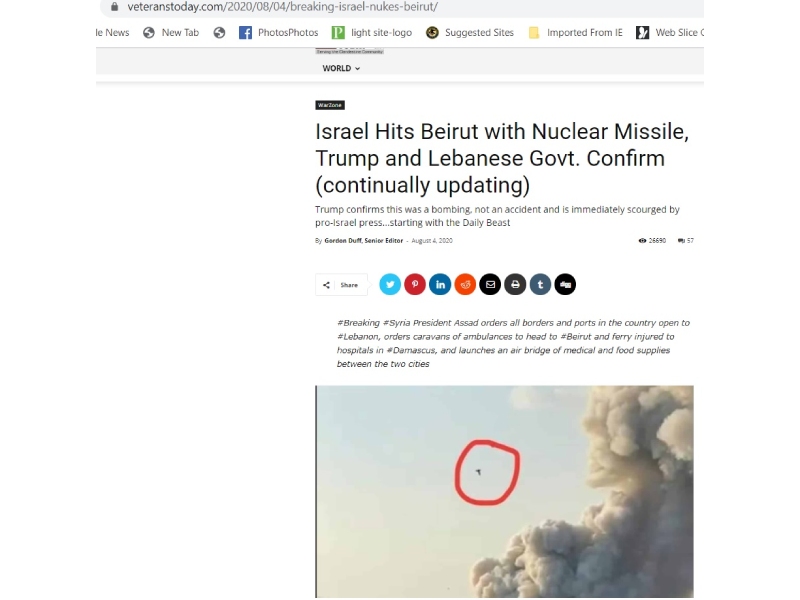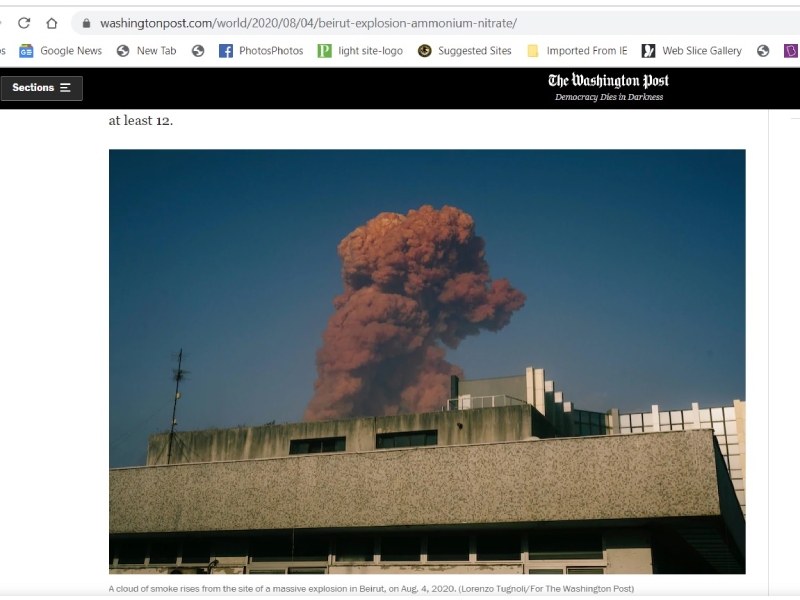Fact Check: Is the massive blast in Beirut a nuclear explosion?
By Satya Priya BN
Hyderabad: At least 100 people were killed and thousands injured in the massive blast that occurred in Beirut, the capital city of Lebanon, on Tuesday, August 4, 2020. The blast was very huge and it damaged many buildings.
Several videos started circulating online after this incident, claiming that this blast is a nuclear explosion. A visible blast wave and the mushroom-like cloud of smoke engulfed the area, destroying nearby buildings and shattering windows.
A website named veteranstoday.com published an article titled 'Israel Hits Beirut with Nuclear Missile, Trump and Lebanese Govt. Confirm.'

Fact check:
The claim that the blast that took place in Beirut is nuclear explosion is FALSE.
According to the reports, the explosion occurred in the warehouse or a storage facility at the port which stocked up to 2,700 tonne of seized ammonium nitrate. The cargo of ammonium nitrate arrived in Lebanon in September, 2013, onboard a Russian-owned cargo vessel flying a Moldovan flag. The ship's dangerous cargo was then offloaded and placed in Hangar 12 of Beirut port, a large grey structure facing the country's main north-south highway at the main entrance to the capital.
NewsMeter also found reports that Customs officials sent letters to the authorities, for three years, asking for guidance to dispose of ammonium nitrate. They proposed three options: Export the ammonium nitrate, hand it over to the Lebanese Army, or sell it to the privately-owned Lebanese Explosives Company.
According to the businessinsider.in, though there was a mushroom cloud or the Wilson cloud, as the weapon researchers call, it forms when humid air gets compressed and causes the water in it to condense and is not unique to nuclear bombs.
Ammonium nitrate, which the Lebanese authorities have said caused the devastating Beirut blast, is an odourless crystalline substance commonly used as a fertiliser that has been the cause of numerous industrial explosions over the decades. When combined with fuel oils, ammonium nitrate becomes a potent explosive widely used in the construction industry and also by armed groups such as the Taliban for improvised explosives.
Pure solid ammonium nitrate is fairly stable and will explode only under extreme conditions. The combustible contaminants, even in low percentages, create a dangerous combination and the ammonium nitrate mixture becomes far more susceptible to detonation.
Reddish smoke emitted after the blast which is a characteristic feature of nitrogen oxides, the
by-products of ammonium nitrate.

When a nuclear weapon detonates, a fireball occurs with temperatures similar to those at the centre of the Sun. The energy emitted takes several forms. Approximately 85 per cent of the explosive energy produces air blast (and shock) and thermal radiation (heat). The remaining 15 per cent is released as initial radiation, produced within the first minute or so, and residual (or delayed) radiation, emitted over a period of time, some of which can be in the form of local fallout.
These patterns cannot be seen in Beirut blast. Hence, the claim that the blast that took place in Beirut is nuclear explosion is FALSE.